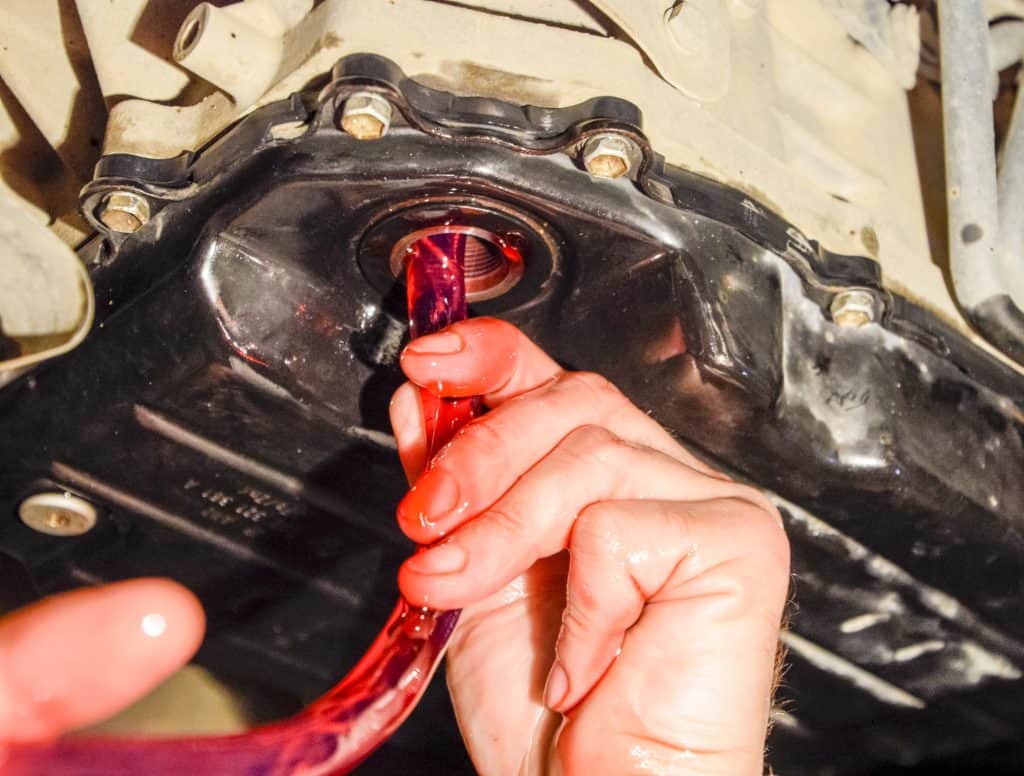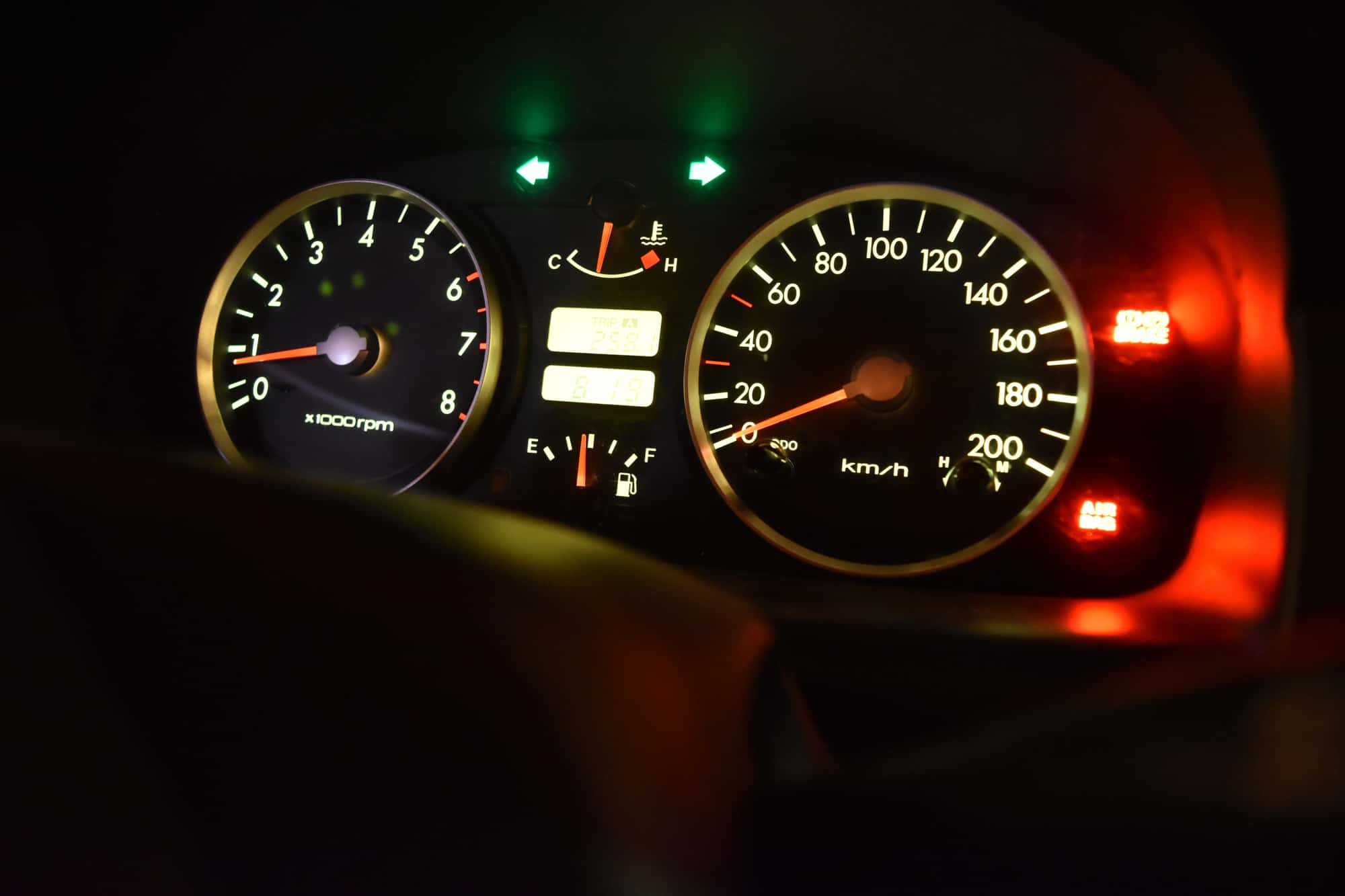If you’ve ever noticed the overdrive light on your dashboard flashing, you might be wondering what could be causing it. One of the most common reasons for this warning light to illuminate is low transmission fluid.
An automatic transmission plays a crucial role in a vehicle’s performance, ensuring smooth gear changes and optimal engine efficiency. One of the essential components of an automatic transmission system is the transmission fluid, which acts as a lubricant and coolant. A common question that arises is, can low transmission fluid cause the overdrive light to flash?
Low transmission fluid can cause the overdrive light to flash, signaling a potential issue with the transmission system.
Overdrive is a gear position in an automatic transmission, enabling the engine to operate at higher speeds with reduced fuel consumption. This function is controlled by a solenoid that relies on fluid pressure to activate the overdrive gear.
When the transmission fluid level is low, the solenoid is unable to efficiently activate the overdrive gear, causing the overdrive light to flash as a warning to the driver.
In this article, we’ll take a closer look at the relationship between low transmission fluid and the overdrive light, and explore some of the other factors that can cause this warning light to illuminate.
Why Does The Overdrive Light Flash When There Is Low Transmission Fluid?
The overdrive system in an automatic transmission is dependent on fluid pressure to operate correctly. When the fluid level is insufficient, it can lead to problems with the overdrive system, and this can trigger the overdrive light.
When a vehicle’s overdrive system is functioning smoothly, the overdrive solenoid is responsible for activating the overdrive gear. This solenoid relies on fluid pressure to work properly. If the pressure is lower than required due to insufficient fluid, the solenoid struggles to engage the overdrive gear, resulting in the overdrive light flashing as a warning.

Some of the other potential issues caused by low transmission fluid include slipping transmission, delayed gear engagement, irregular shifting, and inability to shift at all. These issues can be detrimental to the overall health of the transmission, leading to more severe damage or even a complete failure in the future.
Therefore it is essential to address low transmission fluid levels as soon as possible to prevent lasting damage to the vehicle’s transmission system.
What Is The Link Between Overdrive and Transmission Fluid?
Overdrive is a feature in automatic transmissions that allows the vehicle to drive at higher speeds while the engine operates at lower RPMs. This results in improved fuel efficiency and reduced engine wear, making it an important feature for fuel efficient long-distance driving and highway cruising.
The overdrive light is a warning light that is found on the dashboard of some vehicles equipped with an automatic transmission. It is there to indicate whether the overdrive gear is engaged or not.
In most automatic vehicles, the overdrive gear is automatically engaged when driving at highway speeds to improve fuel economy. However, in some cases, the overdrive gear may need to be manually turned on or off, depending on the driving conditions.
When the overdrive gear is turned off, the transmission will operate in a lower gear, which can be useful when driving in hilly or mountainous terrain or when towing a heavy load.
The overdrive light typically illuminates in green when the overdrive gear is engaged, and in amber or yellow when it is turned off.
If the overdrive light is flashing, it may indicate a problem with the transmission or the overdrive system, and it is recommended that you get it looked at as soon as possible.
What Is The Role of Transmission Fluid in Overdrive?
The smooth operation of an automatic transmission depends heavily on the quality and correct quantity of its transmission fluid. Acting as a lubricant for moving parts, the transmission fluid minimizes friction and heat, while also serving as a hydraulic medium to facilitate gear shifts.
Maintaining the transmission fluid within the recommended range is crucial for the overall health of the transmission and the vehicle’s performance. From preventing damage to the transmission to improving fuel efficiency, keeping an eye on the fluid level is essential for ensuring that your vehicle runs smoothly and reliably.

Low transmission fluid levels can lead to a variety of issues, which may cause the overdrive light to flash as a warning.
Insufficient fluid pressure can prevent the solenoid responsible for activating the overdrive gear from functioning correctly.
Additionally, low fluid levels can result in increased wear on transmission components, potentially leading to more severe problems and even transmission failure.
What Else Causes The Overdrive Light To Flash Besides Low Transmission Fluid?
Besides low transmission fluid, there are several other reasons why the overdrive light may flash. One common cause is a malfunctioning solenoid, which controls the engagement of the overdrive gear.
Another possible cause is a faulty speed sensor, which provides input to the vehicle’s computer to control the transmission. If the speed sensor is not working properly, it can cause the overdrive gear to engage or disengage at the wrong time, which can trigger the light to flash.
Other possible causes include a faulty torque converter, a damaged wiring harness, or a malfunctioning computer.
If the overdrive light is flashing, I’d recommend carrying out an OBD-II diagnostic or have the vehicle inspected by a transmission expert.
Here are a few more reasons why the overdrive light flashes:
Reason 1. A Faulty Overdrive Solenoid
A faulty solenoid can also cause the overdrive light to flash. An overdrive solenoid is an essential component of an automatic transmission that controls the engagement and disengagement of the overdrive gear.
It is an electromechanical device that is controlled by the vehicle’s ECU. It receives input from various sensors, including the vehicle speed sensor and the throttle position sensor, to determine when to engage or disengage the overdrive gear.
When the vehicle is traveling at a consistent speed, the overdrive solenoid will engage the overdrive gear to reduce engine RPMs and improve fuel efficiency.
If the overdrive solenoid fails or malfunctions, it can prevent the transmission from switching to overdrive or it can cause the overdrive gear to engage or disengage at the wrong time, resulting in poor fuel efficiency, engine hesitation, or even transmission damage.
Reason 2. Damaged Wiring
Damaged transmission wiring can sometimes cause the overdrive light to flash. The transmission wiring harness is responsible for transmitting electrical signals from the vehicle’s ECU to the transmission solenoids, sensors, and other components.
If the wiring harness is damaged or the connection is damaged or loose, it can cause the transmission to malfunction, which can trigger the overdrive light to flash.
The wiring harness can become damaged from exposure to heat, moisture, or sometimes debris from the road. In some cases, rodents or other animals may chew on the wiring, causing damage. A damaged wiring harness can cause a range of transmission issues, including failure to shift gears, slipping gears, or delayed engagement.
Reason 3. Overheating
Low transmission fluid levels can cause the transmission to overheat, leading to the flashing light.
The transmission fluid is responsible for cooling the transmission by absorbing heat generated during operation. If the transmission fluid becomes too hot, it can break down and lose its ability to lubricate and cool the transmission. This can cause the transmission to overheat, which can cause the overdrive light to flash.
An overheating transmission can be caused by a variety of factors, such as towing a heavy load, driving in extreme temperatures, or a malfunctioning cooling system. In some cases, a clogged or damaged transmission cooler can also cause the transmission to overheat.
Reason 4. Transmission Fluid Leakage
Transmission fluid leaks can also cause the flashing light, as it results in reduced fluid pressure.
The transmission fluid is responsible for lubricating and cooling the moving parts of the transmission. If the transmission fluid level becomes too low due to a leak, it can cause a range of issues that can trigger the overdrive light to flash.
Low transmission fluid can cause the transmission to slip, hesitate, or fail to shift gears properly, which can cause the overdrive light to flash. It can also cause increased friction and heat, which can lead to premature wear and damage to the transmission.
Transmission fluid leaks can be caused by a variety of factors, such as a damaged transmission seal, gasket, or pan, or a punctured transmission cooler line.
Can Overfilling Transmission Fluid Cause The Overdrive Light to Flash?
Yes, overfilling transmission fluid can indeed cause the overdrive light to flash. This is one of the symptoms of excessive transmission fluid, along with other issues such as fluid leakage and poor vehicle performance. It’s important to maintain the correct fluid level to avoid these problems.
What Are The Common Signs of Low Transmission Fluid?
A slipping transmission is a noticeable sign that your transmission fluid may be low. When there isn’t enough transmission fluid, it can struggle to maintain the appropriate gear, causing the engine’s RPM to increase without a corresponding increase in speed.
Another symptom of low transmission fluid is an overheated transmission. When there is not enough fluid to dissipate the heat generated by the transmission, temperatures can rise to damaging levels, potentially breaking the transmission in the long run.
Low transmission fluid can also cause delayed gear selection, where the transmission hesitates before shifting into the appropriate gear. This can be particularly noticeable when shifting from park to drive or reverse.
Irregular shifting patterns can also be a sign of low transmission fluid. This can include erratic shifting, sudden downshifting while driving, or the inability to shift into specific gears. In some cases, dashboard warning lights, such as the check engine light or transmission warning light, may illuminate to alert you to a potential issue with the transmission fluid level.
What Next – How To Diagnose And Fix Low Transmission Fluid
Diagnosing and fixing low transmission fluid is crucial for the longterm health and performance of your vehicle’s transmission.
To diagnose low transmission fluid, start by checking the fluid level and condition. If the fluid level is low, top it off with the recommended fluid and check for any leaks. If a leak is found, it must be repaired to prevent further fluid loss. If the fluid is dirty or contaminated, it should be replaced entirely. Regular maintenance of the transmission fluid can help prevent low fluid levels and ensure proper transmission function.
You should also carry out an OBD diagnostic readout to see if there are any transmission related codes that may point to the source of the problem. Here are a few common error codes associated with automatic transmission problems.
- P0730 – Incorrect Gear Ratio: This code is triggered when the transmission is unable to shift into the correct gear ratio, which can be caused by low transmission fluid levels.
- P0780 – Shift Malfunction: This code is triggered when the transmission is unable to shift into the correct gear or is slipping, which can be caused by low fluid levels.
- P0731 – Gear 1 Incorrect Ratio: This code is triggered when the transmission is unable to shift into the first gear or is slipping, which can be caused by low fluid levels.
- P0732 – Gear 2 Incorrect Ratio: This code is triggered when the transmission is unable to shift into the second gear or is slipping, which can be caused by low fluid levels.
- P0733 – Gear 3 Incorrect Ratio: This code is triggered when the transmission is unable to shift into the third gear or is slipping, which can be caused by low fluid levels.
After carrying out a diagnostic readout of the ECU, carry out the following steps:
1. Check the fluid level
Start your car to warm up the transmission and keep it in park or neutral, depending on the vehicle and manufacturer. Locate the dipstick, pull it out, and wipe the stick clean with a spare rag. Reinsert the dipstick and then pull it out again to check the level.
On the dipstick, there should be markers to indicate the low and full levels, or words such as “MIN” and “MAX” or “FULL” and “ADD”. The fluid level should be within the minimum and maximum levels for normal operation.
2. Check the fluid colour and smell
The transmission fluid should be a red or pinkish colour and have a slightly sweet smell. If the fluid is dark, brown, or black, or has a burnt smell, it may be time for a fluid change.
3. Add transmission fluid
If the fluid level is lower than the minimum marker, add transmission fluid. Pour the appropriate amount of fluid into the dipstick tube slowly, taking care not to overfill. Reinsert the dipstick and check the level again to ensure it’s within the proper range.
4. Check for leaks
Inspect the transmission housing, cooler lines, and seals for any signs of leaks. If there are visible leaks, have them repaired as soon as possible to avoid potentially damaging the transmission.
5. Flush and refill the transmission
If the fluid colour and smell indicate it’s time for a fluid change, complete a transmission flush following the manufacturer’s recommended procedure. Refill the transmission with the correct type and amount of fluid specified by the manufacturer.
6. Replace the transmission filter
Replacing the transmission filter is an essential maintenance step. Consult the vehicle’s maintenance schedule and perform this task at the recommended intervals or when the filter shows signs of contamination or wear.
7. Repair or replace the transmission
If the above steps do not resolve the issue of low transmission fluid or the overdrive light flashing, it may be necessary to have a professional diagnose and repair or replace the transmission itself.
As an Amazon Associate we earn from qualifying purchases.











How do I properly check my transmission fluid level to ensure it’s not too low?
I’ve noticed that my overdrive light has been flashing lately, and after reading up on it, I’m worried it might be due to low transmission fluid. Before I check the fluid level, could you guide me on how exactly I should check the transmission fluid level in my car? I want to ensure I’m doing it correctly to avoid any further issues.